Employee training is essential for maintaining a competitive edge in today’s rapidly evolving business landscape. Training programs not only enhance employees’ skills and knowledge but also boost productivity, improve job satisfaction, and reduce turnover rates. Well-trained employees are more capable of adapting to changes, meeting organizational goals, and delivering high-quality service. Continuous learning and development are key to fostering innovation and ensuring long-term business success.
The demand for effective training solutions has surged as businesses recognize the need to equip their workforce with up-to-date skills and knowledge. The shift towards remote and hybrid work models has further accelerated this trend, making digital training platforms indispensable. Companies are investing in sophisticated training software to provide flexible, engaging, and personalized learning experiences.
Criteria for Selecting Top Employee Training Software!
Selecting the right employee training software involves evaluating several critical factors:
- User-Friendliness: The software should be intuitive and easy to navigate for both administrators and learners.
- Content Variety and Quality: A robust library of diverse, high-quality content that can cater to different learning styles and needs.
- Customization and Scalability: The ability to customize training programs to fit specific organizational requirements and scale as the company grows.
- Integration Capabilities: Seamless integration with existing tools and systems to streamline processes and data management.
- Analytics and Reporting Features: Comprehensive analytics to track progress, measure effectiveness, and inform decision-making.
- Support and Training Resources: Reliable customer support and extensive resources to help users maximize the software’s potential.
Here is a list of the 10 best Employee Training Software in 2024!
1. Deel
Overview: Deel is renowned for its AI-powered learning management system (LMS) that enhances personalized learning experiences. It focuses on leveraging artificial intelligence to adapt training content to individual learner needs.
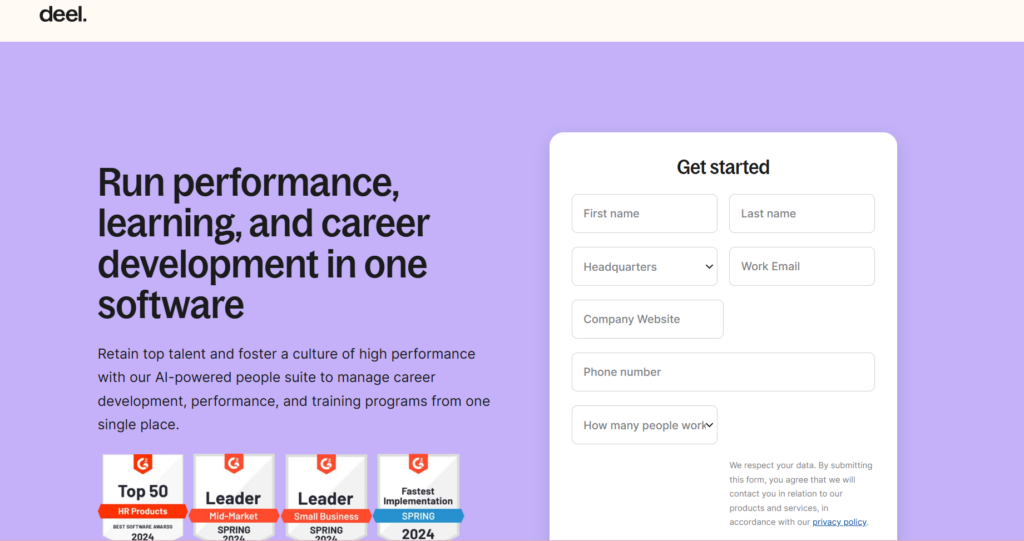
Features:
- AI-driven content curation and personalization
- Adaptive learning paths based on learner progress
- Real-time analytics for tracking learner engagement and performance
Pros:
- Personalized learning experiences enhance engagement.
- AI features optimize content relevance.
- Real-time analytics aid in performance monitoring.
Cons:
- Higher initial investment due to AI integration.
- Complexity in initial setup and customization.
Use Cases:
- Used by large enterprises seeking personalized training solutions.
- Ideal for industries requiring continuous adaptation of training materials.
2. Mitratech Trakstar
Overview: Mitratech Trakstar specializes in multimedia course creation and training, catering to organizations looking to develop interactive and engaging training materials.
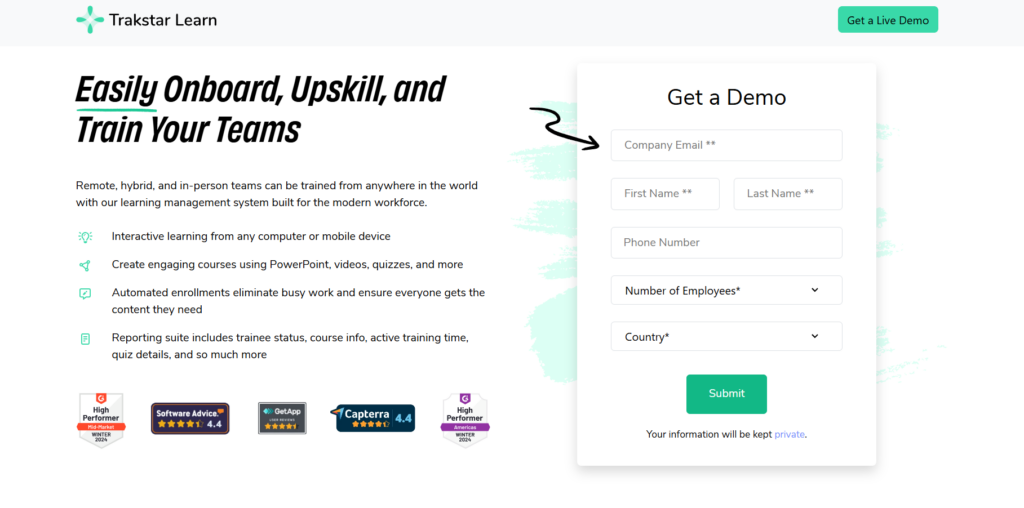
Features:
- Multimedia course authoring tools (videos, quizzes, simulations)
- SCORM compliance for seamless integration with existing systems
- Mobile-friendly learning experiences
Pros:
- Rich multimedia content creation capabilities.
- Scalable for organizations of varying sizes.
- Mobile accessibility enhances learner flexibility.
Cons:
- Requires technical expertise for advanced customization.
- Pricing may be higher for extensive multimedia features.
Use Cases:
- Healthcare and manufacturing sectors utilizing multimedia training modules.
- Companies transitioning to remote and hybrid work environments.
3. Connecteam
Overview: Connecteam offers a comprehensive employee training software solution designed to manage learning and development throughout the employee lifecycle.
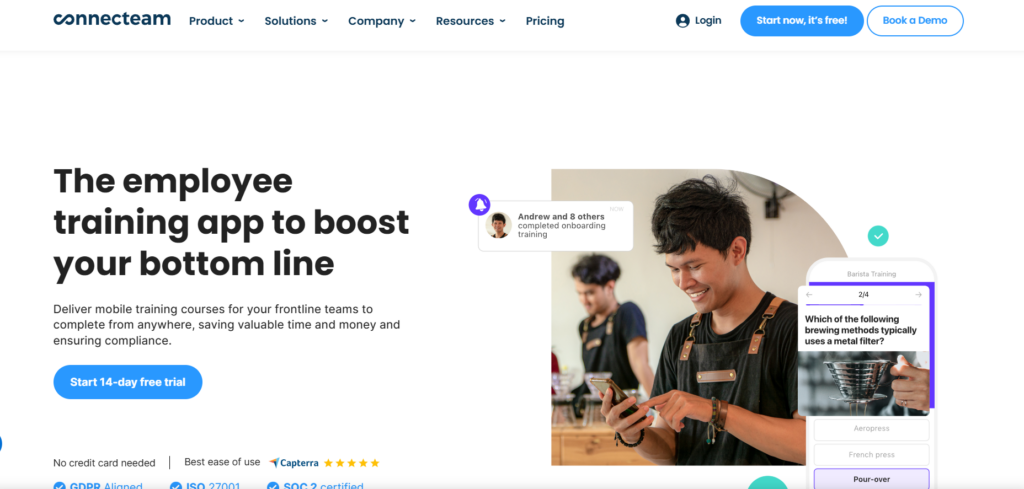
Features:
- Onboarding and training workflows tailored to different roles
- Collaboration tools for peer-to-peer learning and knowledge sharing
- Performance tracking and feedback mechanisms
Pros:
- End-to-end training management simplifies administration.
- The mobile app supports on-the-go learning.
- Integration with HR systems streamlines data management.
Cons:
- Advanced features may require higher-tier subscriptions.
- Initial setup may require time for customization.
Use Cases:
- Retail and hospitality industries managing decentralized workforce training.
- Enterprises focusing on continuous employee development.
4. iSpring Learn
Overview: iSpring Learn is recognized for its capability to quickly deploy company-wide training programs, making it ideal for organizations needing rapid implementation.
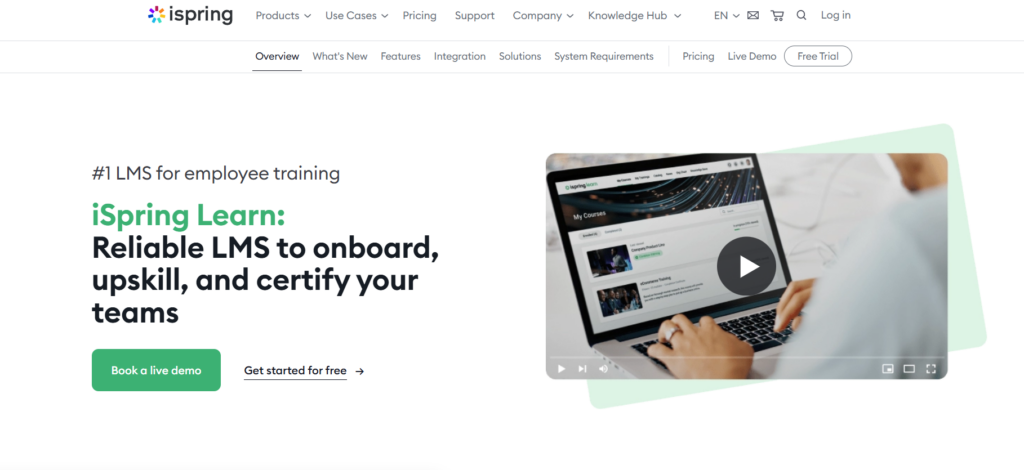
Features:
- Rapid course deployment with customizable templates
- E-learning content authoring tools (quizzes, surveys, assessments)
- Offline access for learning continuity
Pros:
- Fast setup accelerates time-to-market for training initiatives.
- User-friendly interface requires minimal technical expertise.
- Offline access supports learning in low-connectivity environments.
Cons:
- Advanced customization may be limited compared to other platforms.
- The pricing structure may not be cost-effective for small organizations.
Use Cases:
- Tech startups and fast-growing companies scaling training programs.
- Educational institutions require flexible online learning solutions.
5. Kallidus Learn
Overview: Kallidus Learn stands out for its gamification and engagement tracking features, aimed at enhancing learner motivation and participation.
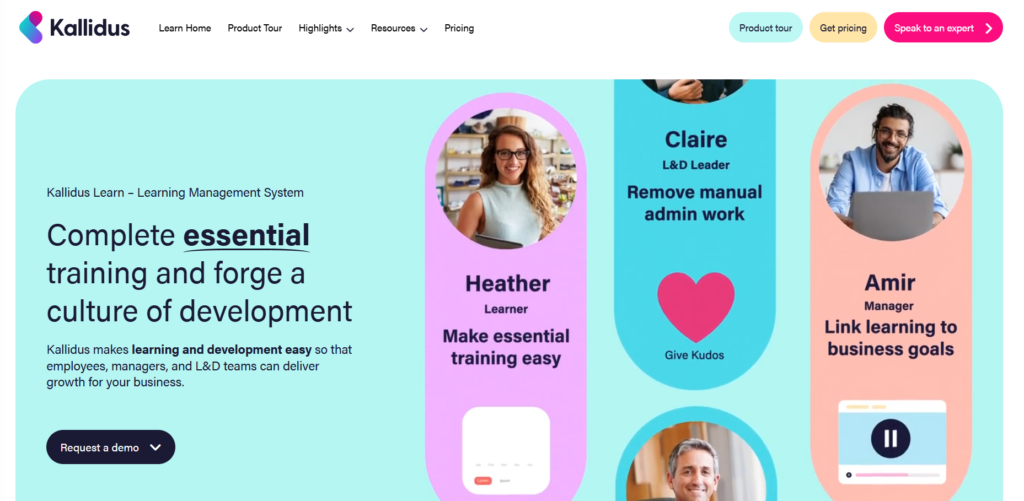
Features:
- Gamified learning experiences (leaderboards, badges, rewards)
- Progress tracking and analytics dashboards
- Social learning capabilities (discussion forums, peer collaboration)
Pros:
- Gamification boosts learner engagement and retention.
- Detailed analytics provide insights into learner progress.
- Scalable for both small businesses and large enterprises.
Cons:
- Initial setup for gamification features may require additional resources.
- Complex pricing structure based on feature add-ons.
Use Cases:
- Sales teams improve product knowledge through gamified training.
- Customer service departments enhance soft skills through interactive modules.
6. eloomi
Overview: Eloomi integrates AI-powered features to deliver personalized learning experiences and streamline training administration.
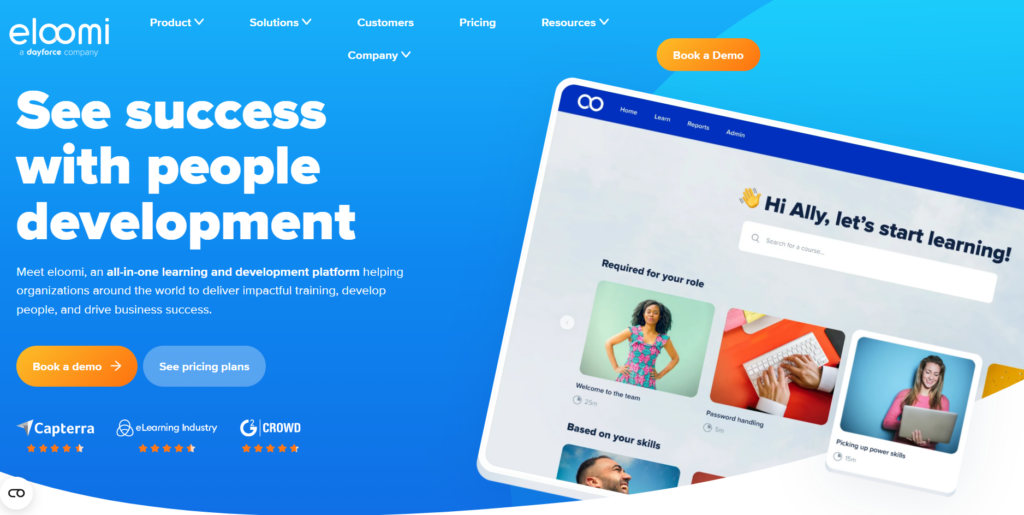
Features:
- AI-driven recommendations for personalized learning paths
- Competency management and skill gap analysis
- Employee feedback and performance reviews
Pros:
- AI enhances learning relevance and effectiveness.
- Comprehensive performance management tools aid in skill development.
- Scalable for organizations with diverse training needs.
Cons:
- AI integration may require initial data setup and configuration.
- Advanced features may be more suitable for larger enterprises.
Use Cases:
- Manufacturing firms optimize workforce skills through competency-based training.
- Tech companies implementing personalized development plans for IT professionals.
7. Absorb LMS
Overview: Absorb LMS focuses on upskilling and reskilling employees with advanced learning analytics and personalized learning paths.
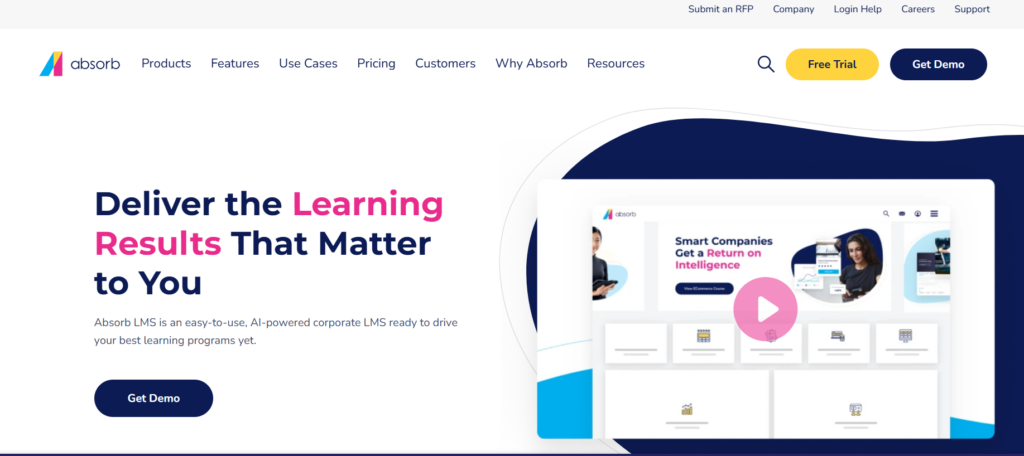
Features:
- Advanced analytics for performance tracking and ROI measurement
- Customizable learning paths based on learner goals and preferences
- Integration with HR and CRM systems for seamless data synchronization
Pros:
- Detailed analytics enable data-driven decision-making.
- Scalable for global organizations with diverse training requirements.
- A customizable interface enhances user engagement.
Cons:
- Higher-tier features may be costly for small to medium-sized businesses.
- Initial setup and customization may require dedicated IT resources.
Use Cases:
- Financial institutions optimize compliance training through personalized pathways.
- Healthcare providers enhancing clinical skills training with performance analytics.
8. SkyPrep
Overview: SkyPrep is recognized for its intuitive user experience and quality customer support, making it ideal for organizations seeking user-friendly training solutions.
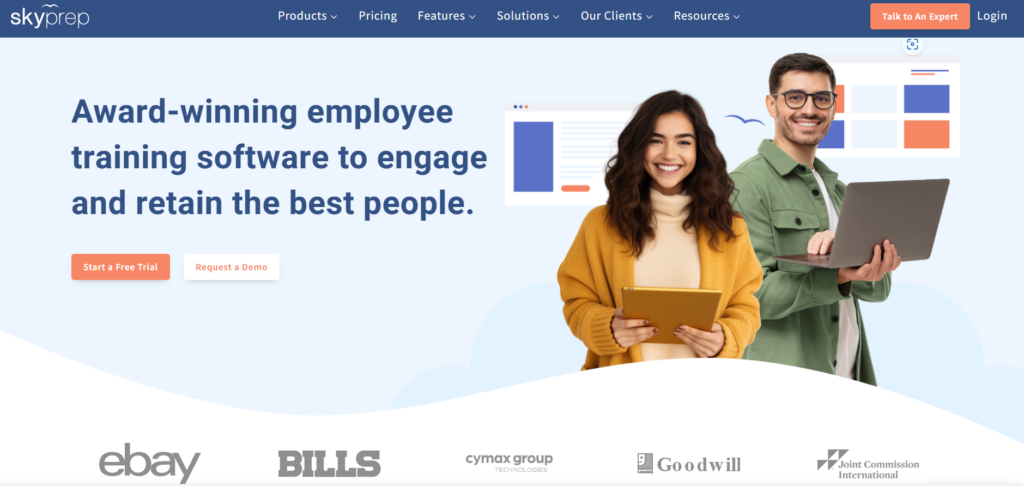
Features:
- Easy course creation and management with drag-and-drop functionality
- Automated course assignments and reminders
- Reporting tools for tracking learner progress and compliance
Pros:
- The intuitive interface requires minimal training for administrators and learners.
- Responsive customer support enhances user satisfaction.
- Scalable for growing organizations with expanding training needs.
Cons:
- Advanced customization options may be limited compared to enterprise-grade solutions.
- Integration capabilities may require additional development for complex systems.
Use Cases:
- Non-profit organizations improve volunteer training through user-friendly modules.
- Educational institutions enhance student engagement with interactive learning tools.
9. WeSchool
Overview: WeSchool simplifies corporate training processes with collaborative and interactive learning tools designed for seamless integration and user engagement.
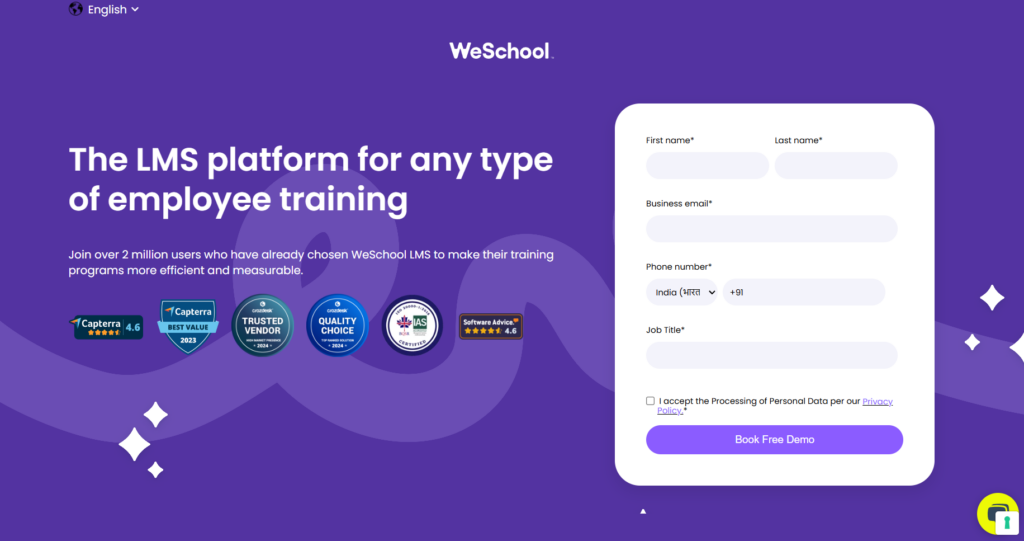
Features:
- Collaborative learning environments with real-time interaction
- Content management system for centralized resource access
- Progress tracking and performance analytics
Pros:
- Interactive learning tools foster engagement and knowledge retention.
- Centralized content management enhances accessibility and usability.
- Scalable for organizations with diverse training needs across multiple locations.
Cons:
- Advanced features may require additional training for administrators.
- Pricing structure may be prohibitive for small businesses with limited budgets.
Use Cases:
- Technology firms promote innovation through collaborative skill development.
- Retail chains improving customer service standards with interactive training modules.
10. Leapsome
Overview: Leapsome integrates learning, engagement, and performance management to close the loop between training initiatives and organizational goals.
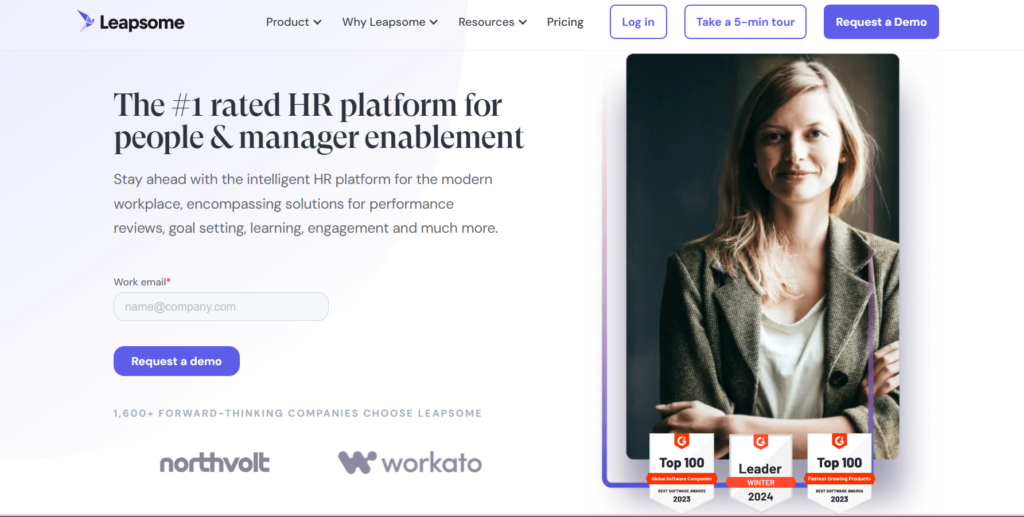
Features:
- Continuous feedback and performance reviews
- Personalized development plans linked to career progression
- Learning analytics for ROI measurement and course effectiveness
Pros:
- The integrated approach aligns training with employee development and organizational strategy.
- Performance management tools enhance learning outcomes and employee engagement.
- Scalable for enterprises seeking comprehensive talent development solutions.
Cons:
- Implementation may require time for alignment with existing HR processes.
- Advanced features may necessitate ongoing support and training for effective use.
Use Cases:
- Consulting firms optimizing employee skill sets through personalized development plans.
- Startups enhance team collaboration and performance with integrated learning and feedback loops.